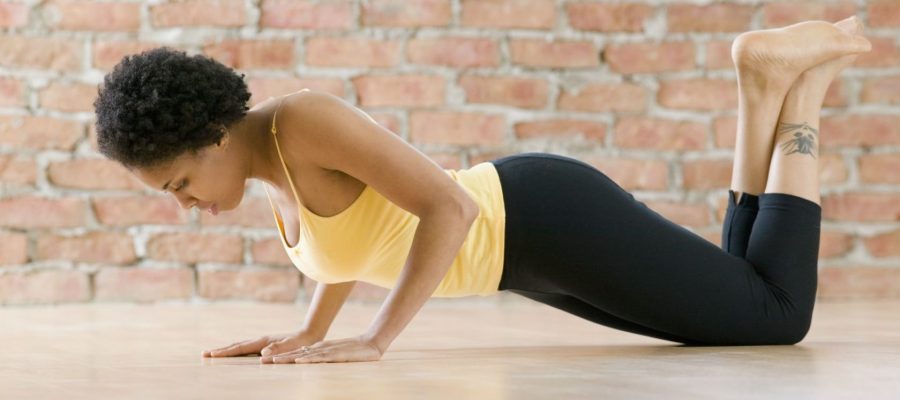Try these upper-body strengthening moves for your triceps.
If you’ve ever been to a pilates class, you’ll know that the workout leaves no muscle left untouched. Pilates back exercises and core moves leave your upper body shaking, while glute bridges and squats are paired with stretching to strengthen and lengthen lower body muscles.
One move that you’ll come across time and time again in class, however, is a press-up – for good reason. “Pilates push-ups concentrate on strengthening the arms, chest, shoulder girdle and abdominals,” says instructor Rachel Lopez. “You’ll also find press-ups in pilates because they recruit a great number of stabilising muscles: the biceps, the abdominals, obliques, quadriceps and erector spinae.”
You may also like
Pilates back exercises: 4 ways to strengthen your back
But don’t expect pilates press-ups to be the same as the ones you perform in the gym. “In pilates, we tend to have a stronger focus on the triceps to even out imbalances and we perform them in a sequence or flow rather than just as reps,” explains Lopez. Here are some variations on the classic move to try.
4 pilates press-up variations
1. Classic pilates press-up
To ensure the move targets your triceps instead of your bigger chest muscles, you need to keep your hands narrow and elbows tucked into your ribs.
- Begin in a high plank position with your wrists directly under your shoulders, fingers splayed wide on the ground.
- Have your feet touching and squeeze your heels and legs together. Engage the glutes and core to maintain a flat back.
- Maintain that engagement as you inhale to lower down to the ground.
- When you’re a few centimetres away from the ground, inhale to squeeze back up.

2. Negative pilates press-up
“Negative push-ups are a great way to build your upper-body strength, and I use them to increase a client’s core stability as they activate the stabiliser muscles in your midsection, including your abdominal muscles and lower back,” says Lopez.
In a negative variation, you focus on the ‘down’ motion, forcing you to hold your body weight for longer.
“It’s performed the same way as a classic pilates press-up but slowly lowering the chest towards your hands for the count of three until your upper body completely touches the floor. Here you can rest your knees on the ground, exhale, and then quickly press back up to the original starting position,” she says. This is also a great variation if you struggle to perform more than a couple of full-body standard issue press-ups, because the eccentric part of the move is the hardest.
3. Wrist-friendly pilates press-up
Many people use pilates as a form of rehab when coming back from an injury. When you get the OK to start doing weight-bearing exercises, these press-ups might be a useful way to build strength.
You may also like
Pilates fitness challenge: “I did online pilates every day for 2 weeks and my core is stronger than ever”
“My top tip for total beginners or those coming back from a wrist or shoulder injury is to use a variation with your hands turned inwards. This takes pressure away from the wrists and more to the fingers and knuckles,” says Lopez.
Perform it the same way as a standard press-up, but with your knees resting on the mat and your hands slightly wider than shoulder distance apart. Turn the left hand inwards slightly, to around 1 o’clock and your right hand inwards to 11 o’clock as you perform the exercise.
4. Pilates press-up flow
Want to perform a pilates flow of your chosen variation? Here’s Lopez’s go-to that she performs towards the end of class when you’re warmed up enough to get through the dynamic routine.
- Stand at the back of your mat with feet in parallel.
- Raise the arms above your head then round the upper body to dive over your legs towards the mat.
- Place your hands on the mat and walk them out into a plank position with your hands shoulder-width apart.
- Perform your chosen variation of a press-up, repeating three to five times.
- Lift your hips towards the ceiling into downward dog then walk your hands back towards your feet.
- Roll up one vertebra at a time to an upright position.
- Repeat the flow three times.
Images: Getty
Source: Read Full Article
